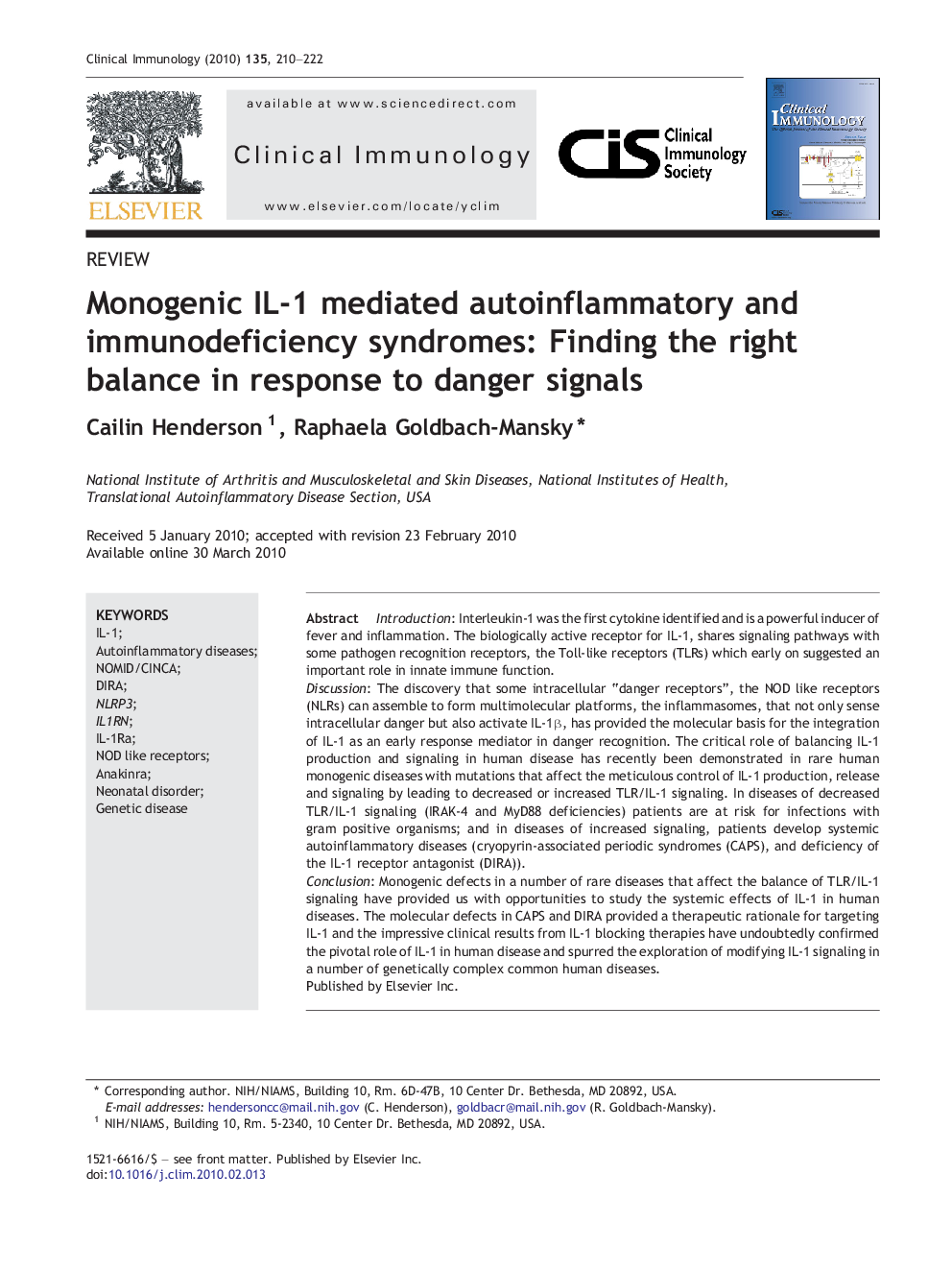| Article ID | Journal | Published Year | Pages | File Type |
|---|---|---|---|---|
| 3257759 | Clinical Immunology | 2010 | 13 Pages |
IntroductionInterleukin-1 was the first cytokine identified and is a powerful inducer of fever and inflammation. The biologically active receptor for IL-1, shares signaling pathways with some pathogen recognition receptors, the Toll-like receptors (TLRs) which early on suggested an important role in innate immune function.DiscussionThe discovery that some intracellular “danger receptors”, the NOD like receptors (NLRs) can assemble to form multimolecular platforms, the inflammasomes, that not only sense intracellular danger but also activate IL-1β, has provided the molecular basis for the integration of IL-1 as an early response mediator in danger recognition. The critical role of balancing IL-1 production and signaling in human disease has recently been demonstrated in rare human monogenic diseases with mutations that affect the meticulous control of IL-1 production, release and signaling by leading to decreased or increased TLR/IL-1 signaling. In diseases of decreased TLR/IL-1 signaling (IRAK-4 and MyD88 deficiencies) patients are at risk for infections with gram positive organisms; and in diseases of increased signaling, patients develop systemic autoinflammatory diseases (cryopyrin-associated periodic syndromes (CAPS), and deficiency of the IL-1 receptor antagonist (DIRA)).ConclusionMonogenic defects in a number of rare diseases that affect the balance of TLR/IL-1 signaling have provided us with opportunities to study the systemic effects of IL-1 in human diseases. The molecular defects in CAPS and DIRA provided a therapeutic rationale for targeting IL-1 and the impressive clinical results from IL-1 blocking therapies have undoubtedly confirmed the pivotal role of IL-1 in human disease and spurred the exploration of modifying IL-1 signaling in a number of genetically complex common human diseases.
